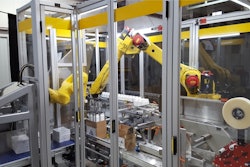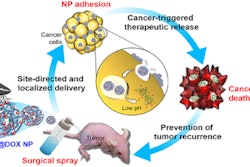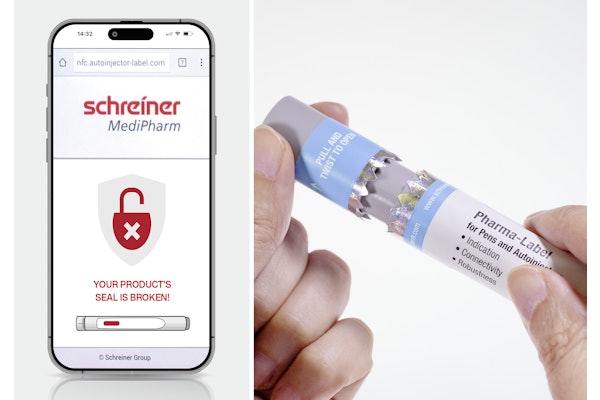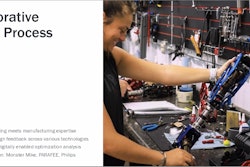Top Three Takeaways:
1. Billions of dollars are wasted in the U.S healthcare system each year.
2. A platform allows hospitals to re-sell unopened devices and meds to other sites.
3. Hospitals recover costs and eliminate products from the waste stream.
---
Each year, billions in unused pharmaceuticals, medical supplies and devices are thrown out—it’s a drain in terms of money, healthcare and the environment. Meanwhile, millions of people go without healthcare in the U.S.
The National Academy of Medicine estimated the U.S. healthcare system wastes $765 billion a year, “more than the entire budget of the Defense Department,” said Marshall Allen in a ProPublica article.
“We created a marketplace where medical facilities, primarily hospitals, can exchange these goods with each other,” says John Kupice, CEO at H-Source, a cloud-based platform where member hospitals privately buy and sell products and equipment with each other. “We allow them to recover costs and reduce what they're spending. Especially at the smaller- and medium-sized hospitals, that reduced spending is extremely important because they're under water. That's been really gratifying and good to see.”
Origins
H-Source’s founder, Murray Walden, was a medical device rep for over a decade and witnessed the surplus of perfectly good, high-end products discarded. A hospital might be stuck with 44 heart valves worth $6,000 each after the only doctor who used them left for another hospital.
Walden took a leap, leaving his stable employment to create a business where hospitals paid for membership in order to exchange goods among themselves. By the first year, he had 20 member hospitals.
Kupice, with a background at Ernst & Young and experience running a tech company in entertainment, came in to mold the business, making it transaction-based and with accounting systems similar to that of hospitals.
H-Source now has more than 500 hospitals on the platform, with upward of 1,000 hospitals under contract, meaning that nearly 20% of registered hospitals in the U.S. are under contract (the American Hospital Association estimates there are 5,534 registered hospitals nationwide.) They help hospitals buy and sell non-controlled pharmaceuticals, medical devices/supplies and even hospital beds and capital equipment like CT scanners.
From shelf to platform
So with employees already strapped for time, how is a product identified and moved from surplus to the marketplace? It’s really a mix, says Kupice. At times, nurses notice product on the shelves. Other times, someone from the supply chain may audit items. “Primarily, most hospitals have really tightened up their supply chain, or are in the process, so they can see what they call ‘idle,’ ‘stale,’ or ‘slow-moving’ inventory,” he says.
When these products are identified, some hospitals give them to mission donations, but unfortunately, more throw them out to clear space quickly. “Sometimes, they'll sell to a third-party or auction, but that's rare because they just don't have the time,” he says.
Kupice says they help hospitals more and more with product posting, which is an added cost for the hospitals, but deemed worth it to recover the product costs. Kupice explains that for certain customers, “We'll send someone in every couple weeks through the facility to organize or pull that inventory and put it in a quarantine area and then sell from there.”
 For facilities that post their own products, sometimes department leads handle these duties, but more often it’s a tech that's assisting at a warehouse or with the inventory. Since all healthcare groups know how to use Excel, they’ll create a list of products and then customer care at H-Source will upload the items.
For facilities that post their own products, sometimes department leads handle these duties, but more often it’s a tech that's assisting at a warehouse or with the inventory. Since all healthcare groups know how to use Excel, they’ll create a list of products and then customer care at H-Source will upload the items.
“We don't get a lot of images unless it's capital equipment,” says Kupice. “For drugs, we have the images of drugs, but most of the people are purchasing based on information: make, model, manufacturer, lot number, expiration date. We take that info as well as the quantity and selling price.”
H-Source provides more hands-on service where needed. “We're trying to partner, collaborate. The hospitals are trying, but they're really stretched thin,” he adds.
Pricing items
Hospitals set their own prices on inventory. Because most products are idle, overstock, tired or shared with sister hospitals, it is rare that a facility would earn a profit. Additionally, Kupice explains, “Most hospitals are part of Group Purchasing Organizations and we don't know what pricing they receive. Most of those contracts stipulate that hospitals may not purchase and upsell for a profit. It's only recovering a portion of costs. That being said, the platform and software have been built to provide new innovative solutions in supply chain as well.”
With mission donation, there may be a small tax benefit or they may receive 10 or 12 cents on the dollar with an auction or third-party. Here, the hospital can set their price and recover 40-50 cents more at times.
Labor costs outweighed by cost savings
In Colorado, H-Source works with 76 of the approximately 105 hospitals in the state, partnering with the Colorado Hospital Association. One group of hospitals under common management found so much cost recovery through the platform that they adjusted an employee’s job responsibilities to focus more on opportunities to use H-Source through their member hospitals.
Sidebar: Delivery Packaging
As Kupice notes, “All hospitals know how to receive something that's unopened, undamaged, unexpired, and it goes through a multi-step inspection process before they even bring it in to inventory from the loading dock.” The process is essentially reversed for hospitals handling delivery, though at times H-Source will assist with packaging.
To sell a product, the hospital must inspect the package to ensure it is unopened, undamaged and within the expiry date.
Whenever possible, sellers or H-Source use original packaging, peanuts and shells. “They're packed that way for a reason when they come from the manufacturer, so we imitate that,” says Kupice.
Saved packaging is especially important for uniquely shaped items such as long, narrow boxes for cath lab items. “The hospitals do have boxes because they're moving products or returning things. Otherwise, we carry some boxes for them,” he says. Alternatively, if the hospital is using the U.S. Postal Service, they can opt for flat rate packaging if the products will fit.
H-Source uses large carriers that have standard processes for pharmaceuticals and medical devices, such as FedEx, UPS, DHL, and then local markets will work with couriers.
Sidebar: Simplified Logistics
Through the system, customers can access hundreds of hospitals while interacting with H-Source as a single vendor. “They can order from 10 different medical facilities in 10 different states. The system generates a purchase order, a pick list, and a shipping label, or labels, for each of those facilities. Then that label is placed on the package. They generally use our shipping so we know when it's received,” says Kupice.
“We handle the logistics. We don't know the weight of the package because it's not in our inventory. So it goes out at a pound, for example. When UPS or Fed Ex scans it, we get the actual dimensions and shipping weight and the product is shipped. We’re alerted when it’s received. We get the actual shipping cost and we get that into our system through an API,” he explains.
The system will combine all 10 of those orders into one invoice for the purchasing hospital, but then split the payment out on the backend for the 10 individual facilities. H-Source takes the fee on that. “Hospitals are great at focusing on clinical, so we handle the logistics.”
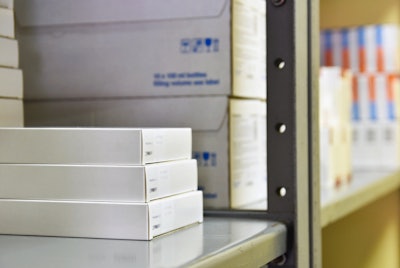
 For facilities that post their own products, sometimes department leads handle these duties, but more often it’s a tech that's assisting at a warehouse or with the inventory. Since all healthcare groups know how to use Excel, they’ll create a list of products and then customer care at H-Source will upload the items.
For facilities that post their own products, sometimes department leads handle these duties, but more often it’s a tech that's assisting at a warehouse or with the inventory. Since all healthcare groups know how to use Excel, they’ll create a list of products and then customer care at H-Source will upload the items.


